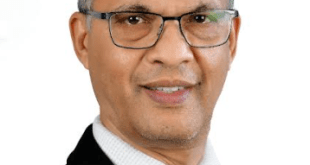Lung cancer remains a formidable global health challenge, accounting for a significant proportion of cancer-related mortality. In India, it is one of the leading causes of cancer deaths, particularly among men, though recent years have seen a worrying rise among non-smokers as well. The National Cancer Registry Programme (NCRP) underscores its growing incidence, closely linked to environmental pollution, occupational exposure, and lifestyle changes.
What makes lung cancer particularly aggressive is its tendency to remain asymptomatic until advanced stages. Early diagnosis dramatically alters prognosis, as patients diagnosed at a localized stage have access to curative interventions. Unfortunately, a large proportion of patients in India present late, by which time the disease has already metastasized. Understanding and addressing the factors contributing to diagnostic delays is, therefore, critical to improving outcomes.
Diagnostic Delays: Understanding the Multifactorial Barriers
The diagnostic journey for a patient with lung cancer in India is often prolonged and fragmented. The reasons are multifactorial and fall broadly under three domains, patient-related, healthcare system–related, and disease-related.
1. Patient-Related Factors
The earliest signs of lung cancer, such as chronic cough, chest discomfort, breathlessness, or unexplained weight loss, are often subtle. These symptoms are commonly attributed to benign causes like smoking-related bronchitis, pollution, or aging. Many individuals self-medicate with cough syrups or antibiotics, delaying professional evaluation.
Stigma also plays a role. Smokers and industrial workers may avoid medical attention due to fear of blame or discrimination. Moreover, psychological factors such as denial, fatalism, and fear of the diagnosis itself often contribute to late presentation.
2. Healthcare System–Related Factors
In India, advanced diagnostic tools such as CT/PET imaging, bronchoscopy, and biopsy-guided pathology remain largely concentrated in tertiary care centers. This uneven distribution creates a geographical gap in access.
Primary care physicians, who are often the first point of contact, may lack adequate training to recognize early red-flag symptoms or to initiate timely referral. The absence of standardized referral protocols and the shortage of pulmonologists, oncologists, and thoracic surgeons further extend the diagnostic timeline.
3. Disease-Related Factors
The biology of lung cancer itself poses challenges. Many tumors remain asymptomatic until they reach a considerable size or invade nearby structures. Peripheral lesions may not be visible on standard chest X-rays, necessitating advanced imaging like low-dose CT (LDCT) for detection. The disease’s rapid doubling time also means that even minor diagnostic delays can lead to significant progression.
Clinical Impact of Delayed Diagnosis
Delayed diagnosis has measurable consequences on both survival and treatment outcomes. The interval between symptom onset, diagnosis, and initiation of therapy is a decisive prognostic factor.
-
Stage Progression: Patients initially presenting with localized disease often progress to advanced stages during diagnostic delay, significantly reducing the likelihood of curative resection.
-
Survival Outcomes: Studies from the Indian Journal of Cancer and National Centre for Disease Informatics and Research (NCDIR) indicate that delays exceeding 20–30 days between diagnosis and treatment initiation are associated with markedly poorer survival rates.
-
Treatment Limitations: Early-stage disease can often be managed with surgery or stereotactic radiotherapy, whereas late-stage disease necessitates systemic therapies such as chemotherapy, immunotherapy, or targeted agents, which are primarily palliative.
-
Quality of Life: Diagnostic delays result in advanced disease at presentation, leading to prolonged hospitalizations, increased treatment costs, and higher physical and emotional burden on patients and caregivers.
Given the aggressive nature of lung cancer, even seemingly short delays can alter clinical trajectories.
Strategies to Reduce Diagnostic Delays
Addressing diagnostic delays requires a coordinated, multi-tiered approach encompassing awareness, accessibility, and systemic reform.
1. Strengthening Early Detection
Public education remains the cornerstone of early diagnosis. Awareness campaigns must highlight that a persistent cough lasting more than three weeks, unexplained breathlessness, chest pain, or haemoptysis warrant medical evaluation. High-risk populations, such as smokers, industrial workers, and those with chronic obstructive pulmonary disease (COPD), should undergo periodic screening.
2. Empowering Primary Care
Training general practitioners to identify early warning signs and refer patients for advanced imaging can bridge the critical gap between primary care and oncology centres. Incorporating clinical decision support tools and red-flag symptom checklists into routine practice can further streamline this process.
3. Expanding Diagnostic Infrastructure
Regional cancer diagnostic hubs with integrated facilities for radiology, bronchoscopy, and pathology can significantly shorten turnaround times. Leveraging telemedicine platforms for image interpretation and remote consultation can improve access for patients in semi-urban and rural settings.
4. Policy-Level Interventions
Incorporating lung cancer screening and early detection into existing national health programs such as the Ayushman Bharat – Health and Wellness Centres (HWCs) can institutionalize preventive surveillance. Public-private partnerships should be encouraged to subsidize imaging and molecular diagnostics, ensuring equitable access to quality care.
Conclusion: Urgency as a Clinical Imperative
In lung cancer, time is a clinical determinant of survival. Every day lost between the first symptom and the start of treatment contributes to disease progression and worsened prognosis.
Early identification, prompt referral, and rapid initiation of therapy remain the most effective strategies to improve survival rates. Strengthening awareness, enhancing diagnostic access, and building coordinated care pathways must be integral to India’s cancer control agenda.
For clinicians, each consultation offers an opportunity to detect early disease; for patients and caregivers, vigilance over persistent respiratory symptoms can make the difference between curative and palliative intent.
Ultimately, in the fight against lung cancer, timeliness is treatment.
Dr M Harsha Deepti madam Surgical Oncologist, HCG Cancer Center – Vijayawada
 Newspatrolling.com News cum Content Syndication Portal Online
Newspatrolling.com News cum Content Syndication Portal Online






